As veterinary neurologists, one of the cases we most frequently see is a dog with slipped disc symptoms. Fortunately, depending on the severity and elected treatment option, prognosis for recovery can be as high as 95% when treated early. However, without timely treatment, your dog’s slipped disc can quickly progress and cause irreversible spinal cord damage. Therefore, it might be a good idea for pet parents to be able to recognize the typical symptoms of slipped discs in dogs.
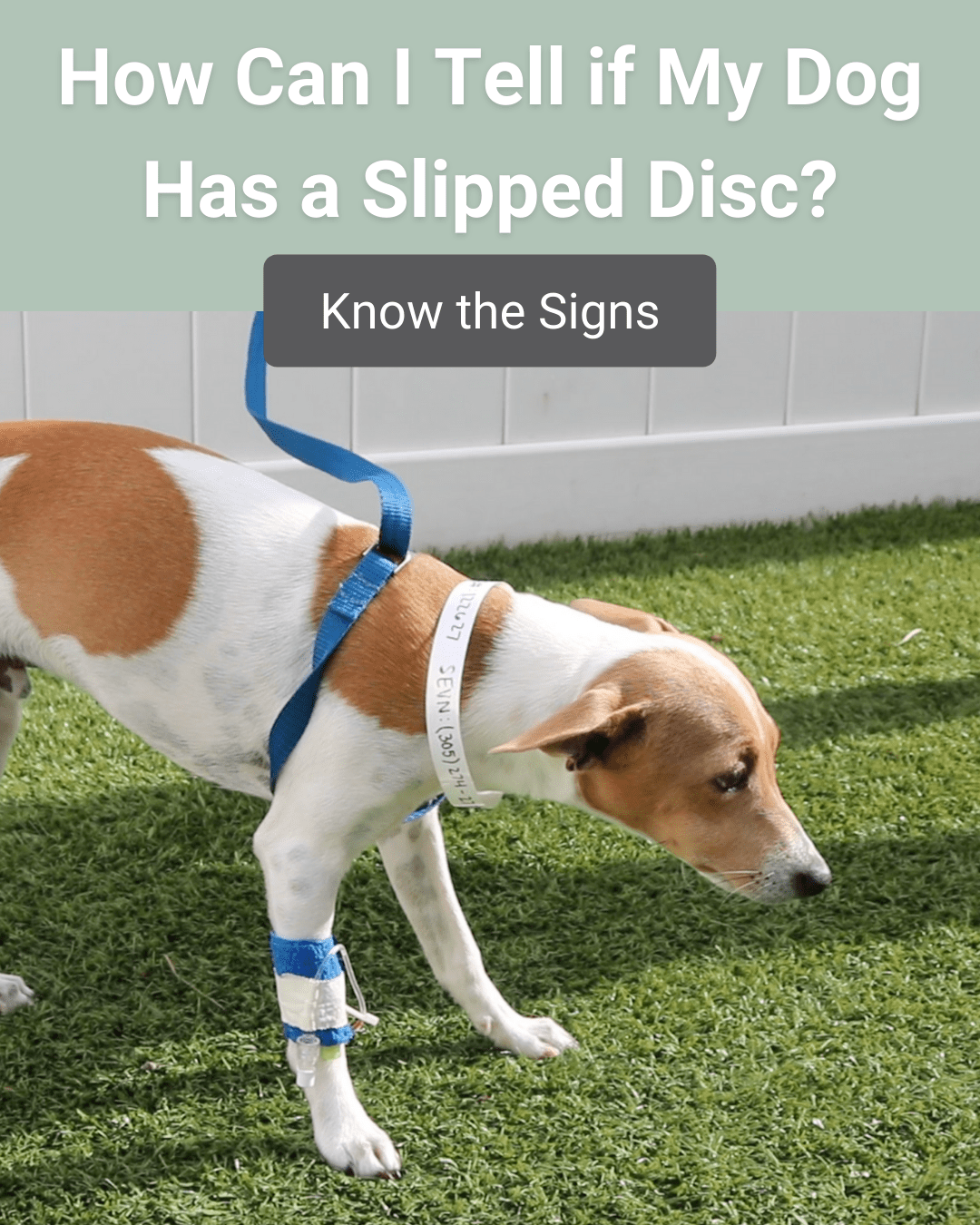
Dog Slipped Disc
A slipped disc is the most common spinal problem seen in dogs.
“Intervertebral Disc Disease (IVDD) occurs when the once shock-absorbing discs between the bones of the spine dehydrate and degenerate. As a result of this degenerative process, the discs can bulge or rupture, hence the term slipped disc. A slipped disc puts pressure on the dog’s spinal cord, thereby causing pain and potentially other more serious neurologic symptoms,” explains Dr. Christine Senneca, Veterinary Neurologist at Southeast Veterinary Neurology.
In dogs, slipped discs usually occur mid-back, but can occur anywhere from the neck to the lower back. It can happen to any dog as part of the aging process, but chondrodystrophic (short legged) breeds are more likely to be affected early on in life.
Some of the dog breeds most at risk for slipped discs are:
- Dachshunds
- French Bulldogs
- Shih Tzus
- Pekingese
- Beagles
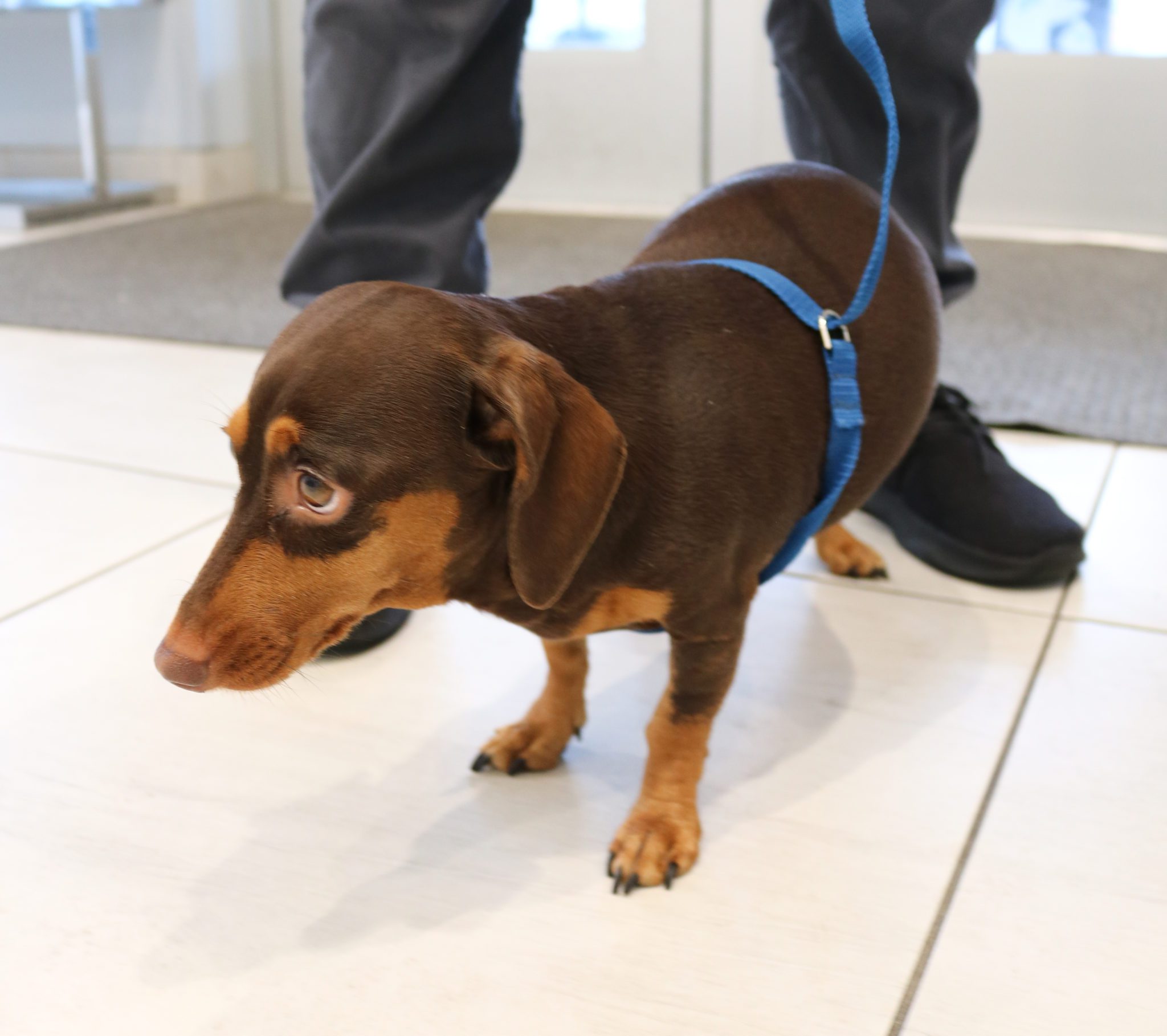
Dog Slipped Disc Symptoms
Signs your dog has a slipped disc can vary from mild neck or back pain to permanent paralysis. Here are some warnings that your dog needs immediate medical attention:
- Lowered head when standing
- Arched or hunched back
- Stiff neck or limbs
- Shivering, shaking, or muscle spasms
- Reluctant to move
- Yelping when moved or touched
- Wobbling, incoordination, or weakness when walking
- Paw knuckling (dragging paws)
- Inability to walk
- Paralysis
- Loss of feeling in toes
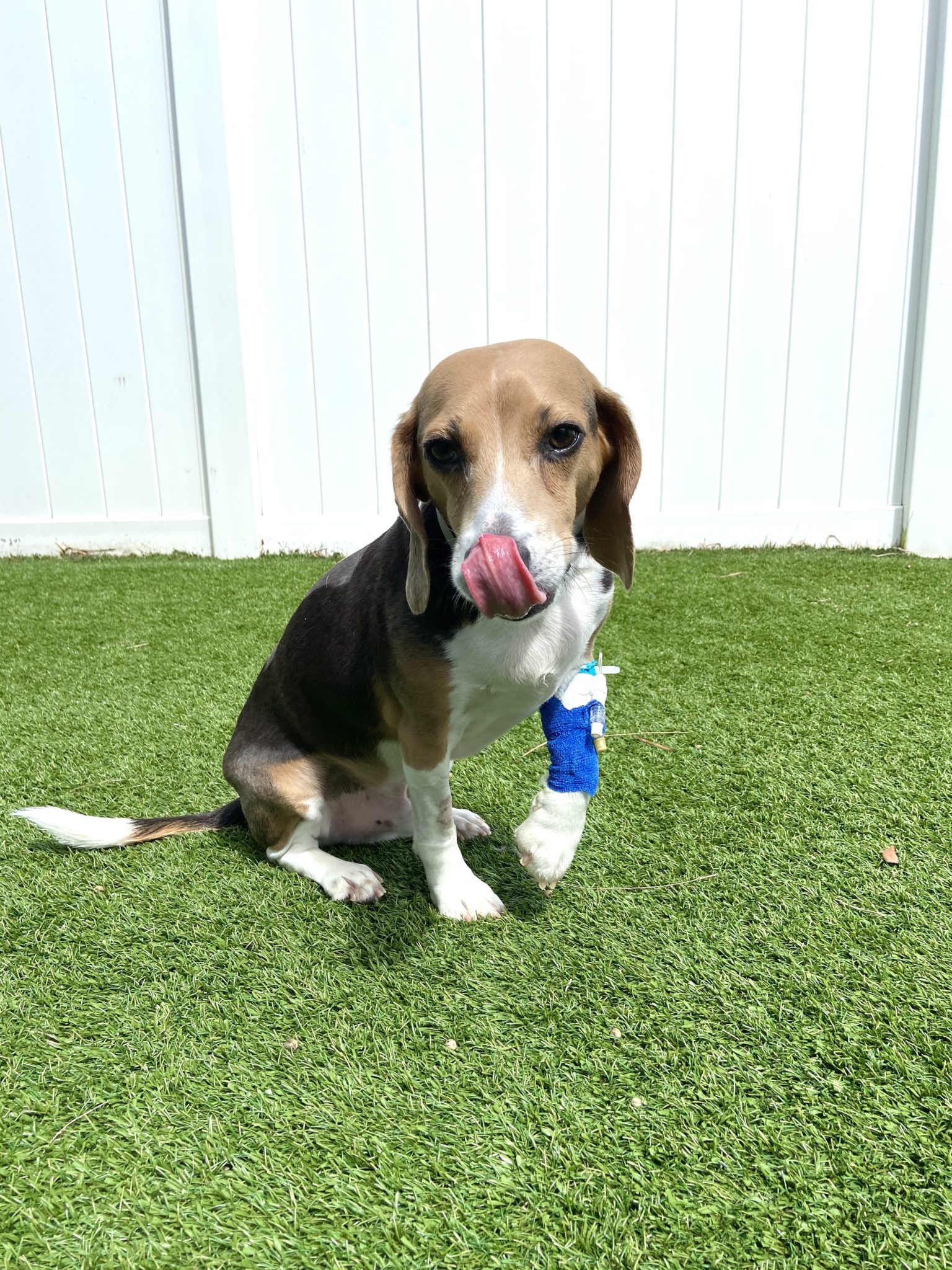
Grading Scale for a Dog with Slipped Disc Symptoms
The severity of the condition of a dog with slipped disc symptoms is assessed on a grading scale of 1-5:
Grade 1
The dog is only experiencing pain, without any neurologic deficits.
Grade 2
There is weakness in one or more limbs, but the dog is able to walk.
Grade 3
The dog is unable to walk, but can still move its limbs.
Grade 4
The dog is paralyzed, but still has feeling in its toes.
Grade 5
The dog is paralyzed and CANNOT feel its toes.
Keep in mind that while there are five grades of severity, the progression is not always linear. For example, your dog may start showing signs of an advanced grade without ever having shown signs of earlier grades.
The Only Way to Tell if Your Dog Has a Slipped Disc
If you observe any slipped disc warning signs in your dog, immediately limit activity to crate rest until you can have your dog evaluated by a veterinary neurologist. If your canine companion has already lost the ability to walk, please don’t wait to get help. Each hour is critical to Rover’s recovery. Southeast Veterinary Neurology is open 24/7 for this very reason.
To diagnose your dog’s slipped disc, a veterinary neurologist will first conduct physical and neurological exams to help rule out other conditions. If after examination, your dog is suspected to have a slipped disc, advanced imaging of the spine will be recommended for a definitive diagnosis. MRI (magnetic resonance imaging) is the best way to conclusively determine whether or not your dog has a slipped disc.
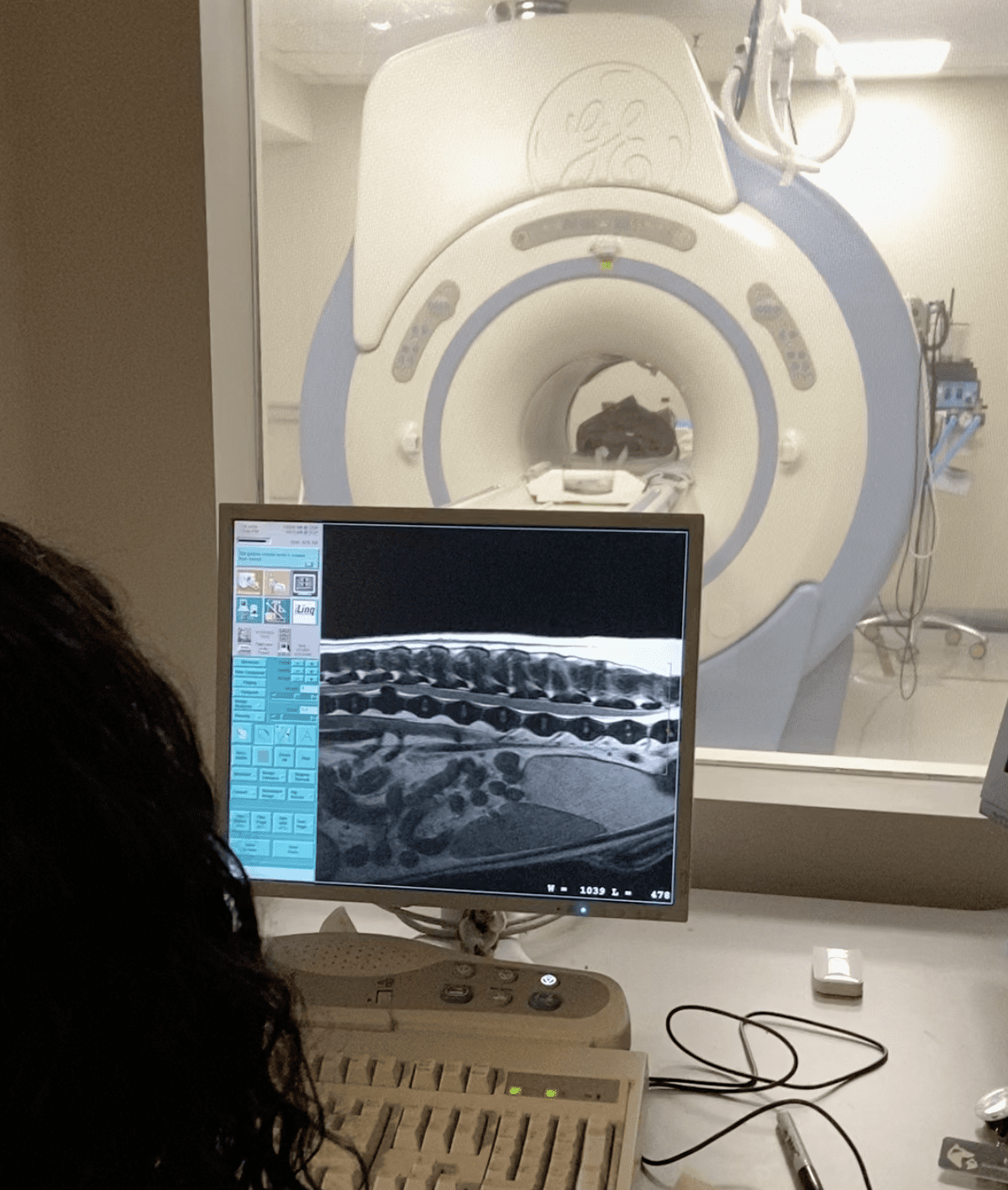
How to Treat Your Dog’s Slipped Disc
Depending on the severity of signs, your dog’s slipped disc can be treated either medically or surgically. In many cases, conservative medical management with the right combination of cage rest, pain and anti-inflammatory medications, and muscle relaxers can be effective and successful. In other cases, however, surgical intervention may be necessary to relieve spinal cord compression.
Either way, the sooner your dog’s slipped disc is attended to, the better the prognosis. Therefore, we strongly recommend visiting a veterinary neurologist as soon as possible. This will not only give your dog the best chance of recovery, but it will also rule out any other neurological conditions that can mimic a slipped disc. Many neurological conditions may share the same symptoms, yet have very different treatment protocols and prognoses.
Call Southeast Veterinary Neurology for Help with Your Dog’s Slipped Disc
Dr. Senneca sums it all up by saying, “Dogs are incredibly resilient and continue to impress us by how well and how quickly so many of them can recover from severe spinal cord injury secondary to a slipped disc, but it is imperative that the appropriate diagnostics and treatments are performed in order to give them that chance to get better.”
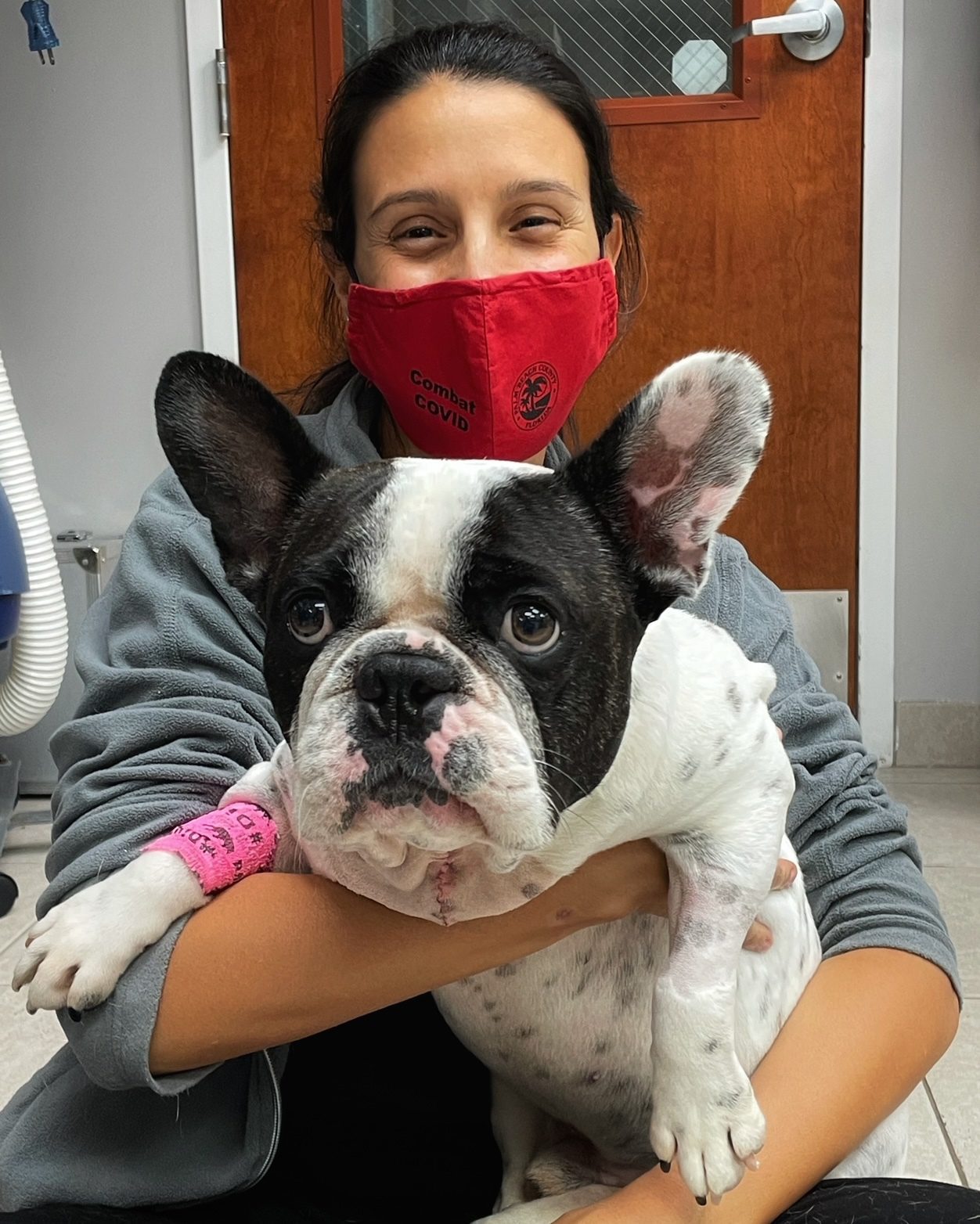
Southeast Veterinary Neurology is experienced, compassionate, and open 24 hours a day, seven days a week to accurately diagnose and expertly treat your dog’s slipped disc. Call any one of our locations in Miami, Boynton Beach, Jupiter, or Virginia Beach right now for more information.
Posted in IVDD
